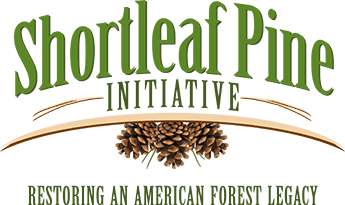|
Shortleaf research, newspaper articles, fact sheets, conference proceedings, literature reviews, and brochures.
Literature LibraryService, U. F. (1929). Volume, yield, and stand tables for second-growth southern pines. U.S. Misc. Pub. 50. Washington, D.C.: U.S. Department of Agriculture, Forest Service. 202 p. Retrieved from http://www.treesearch.fs.fed.us/pubs/24559  What fire frequency is appropriate for shortleaf pine regeneration and survival
What fire frequency is appropriate for shortleaf pine regeneration and survival
Stambaugh, M. C., Guyette, R. P., & Dey, D. C. (2007). What fire frequency is appropriate for shortleaf pine regeneration and survival. Shortleaf pine restoration and ecology in the Ozarks: proceedings of a symposium; 2006 November 7-9; Springfield, MO. Gen. Tech. Rep. NRS-P-15. Newtown Square, PA: U.S. Department of Agriculture, Forest Service, Northern Research Station: 121-128. Retrieved from https://www.nrs.fs.fed.us/pubs/gtr/gtr_p-15%20papers/21stambaugh-p-15.pdf Mann, C. S., & Forbes, A. R. (2007). Wildlife diversity of restored shortleaf pine-oak woodlands in the northern Ozarks. Northern Research Station, General Technical Report NRS-P-15. Retrieved from http://www.treesearch.fs.fed.us/pubs/12866  Winter Roosting Ecology of Silver-Haired Bats in an Arkansas Forest
Winter Roosting Ecology of Silver-Haired Bats in an Arkansas Forest
Perry, R. W., Saugey, D. A., & Crump, B. G. (2010). Winter Roosting Ecology of Silver-Haired Bats in an Arkansas Forest. Southeastern Naturalist, 9(3), 563-572. Retrieved from https://www.srs.fs.fed.us/pubs/ja/2010/ja_2010_perry_002.pdf Cain, M. D. (1999b). Woody and herbaceous competition effects on stand dynamics and growth of 13-year-old natural, precommercially thinned loblolly and shortleaf pines. Canadian Journal of Forest Research, 29(7), 947-959. Retrieved from https://www.fs.usda.gov/treesearch/pubs/1167  Yield tables and stand structure for Shortleaf Pine plantations in Tennessee, Alabama, and Georgia highlands
Yield tables and stand structure for Shortleaf Pine plantations in Tennessee, Alabama, and Georgia highlands
Smalley, G. W., & Bailey, R. L. (1974). Yield tables and stand structure for Shortleaf Pine plantations in Tennessee, Alabama, and Georgia highlands. USDA Forest Service Research Paper, Southern Forest Experiment Station(SO-97). Retrieved from https://www.srs.fs.usda.gov/pubs/rp/rp_so097.pdf |

